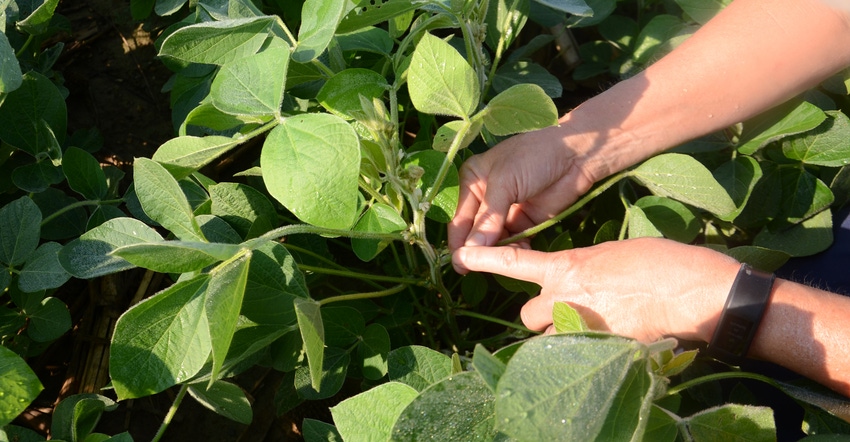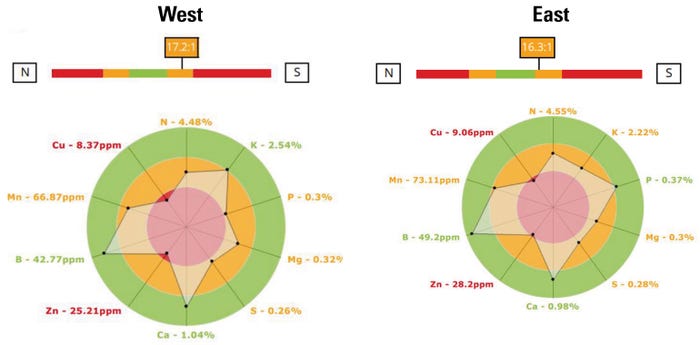
The 2020 Soybean Watch field featured a large, gently sloping Miami soil type on one half of the field and a level, silt loam, Ockley soil type with gravel at three feet deep on the other half. Irrigation was available, and used later in the season, primarily in late August and September when weather in the area turned super dry.
Since the two halves of the field were so different, at R3, tissue samples were pulled separately, one sample for each half. Each sample represented just over 25 acres. “That’s a good practice when there are obvious differences in the field,” says Betsy Bower, an agronomist with Ceres Solutions, based in west-central Indiana. Beck’s sponsors Soybean Watch. Ceres Solutions supplied materials for submitting tissue samples in 2020 and covered testing costs for Sure-Tech Labs so the project could include tissue sampling for the first time.
Related: What you can learn from tissue testing in soybeans
Bower recommends targeting the R1-R2 reproductive stage for tissue sampling in soybeans. By the time the Soybean Watch field was sampled, most plants were at R3. According to the Purdue University Corn & Soybean Field Guide, pods are about a quarter-inch long on one of the four uppermost nodes on the main stem, with a completely unrolled leaf.
The weather was beginning to turn dry, and soils were drying out when the first samples were taken. Irrigation was not yet under way.
Tissue test results
Despite the differences in soil types, the results were surprisingly similar, Bower notes. Potassium, at 2.22%, was somewhat lower on the Ockley soil, versus 2.54% on the rolling soil. Because of the way the lab breaks down recommendations, it labeled potassium as responsive on the Ockley soil, meaning it should respond to fertilizer. The rolling soil was adequate.
 EXAMINE RESULTS: The lab report includes data, plus displays the results as a pie chart. The closer numbers are to the red center circle on the chart, the more likely the crop would respond to that nutrient.
EXAMINE RESULTS: The lab report includes data, plus displays the results as a pie chart. The closer numbers are to the red center circle on the chart, the more likely the crop would respond to that nutrient.

“Potassium wasn’t a problem at that point, but it was worth watching on both of them,” Bower says. “Soybeans use a lot of potassium, especially beginning with the early reproductive stages.”
Sulfur was nearly the same in both samples, at 0.26% on the roiling soil and 0.28% on the Ockley soil. It was labeled as responsive in both cases and was nearing the deficient line for both soils.
“Based on these results, sulfur would be one to keep an eye on,” Bower says. “We are starting to see more responses to sulfur fertilizer, but so far researchers don’t see a response in every field.”
Both copper and zinc were listed as borderline deficient in both samples. Copper was slightly lower on the rolling soil. Zinc was slightly lower on that soil as well. Cool weather earlier in the season may have played a role in those readings, Bower says. Copper is not a nutrient that typically causes issues.
At that point in the season, which was early August since the 2020 field was planted during the first week of June, there wasn’t an obvious action to take, Bower notes.
The organizers decided to pull another sample later to follow up on these trends. Since the samples were similar, they elected to only pull one sample later. Check back next time to see those results.
About the Author(s)
You May Also Like




